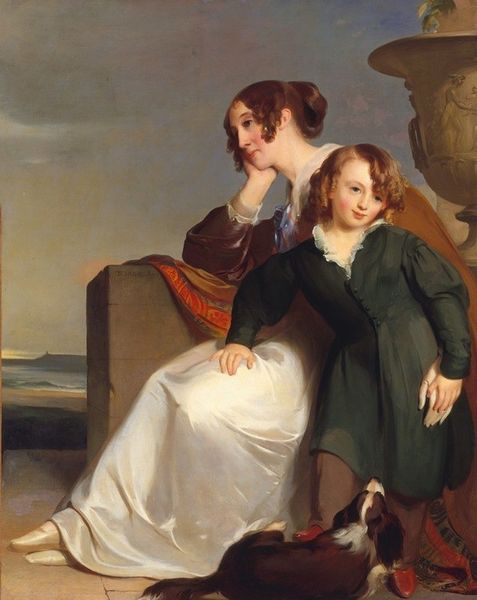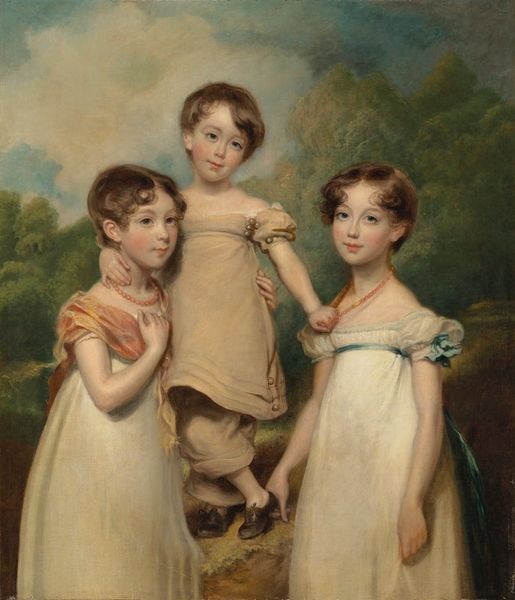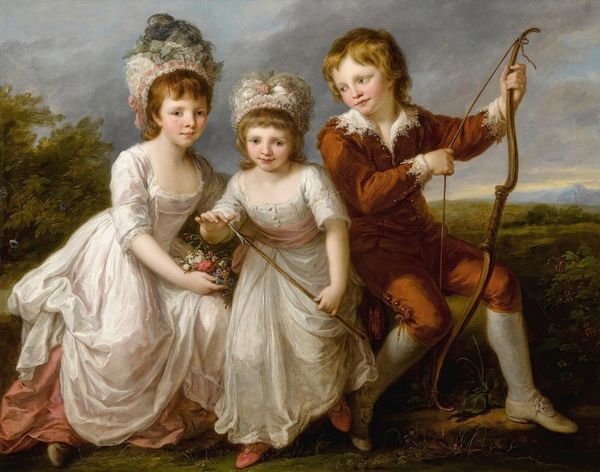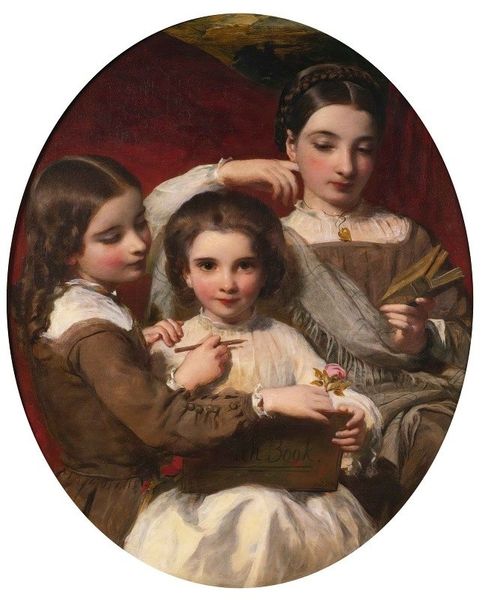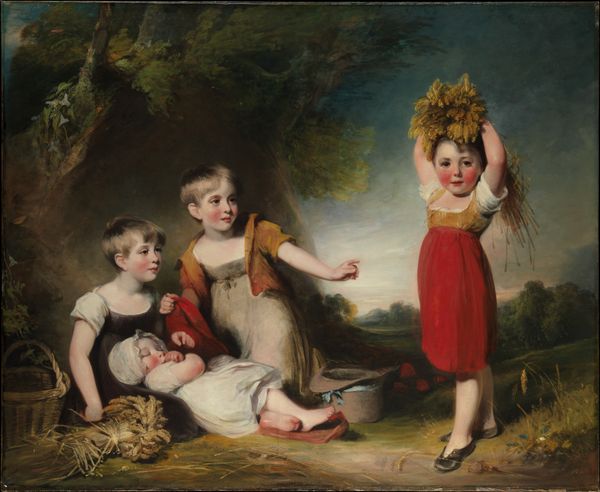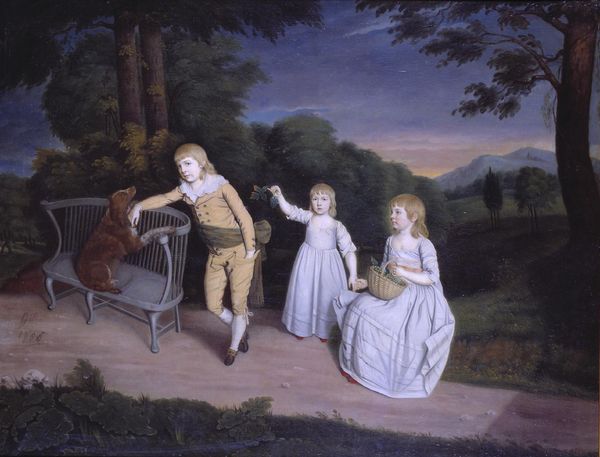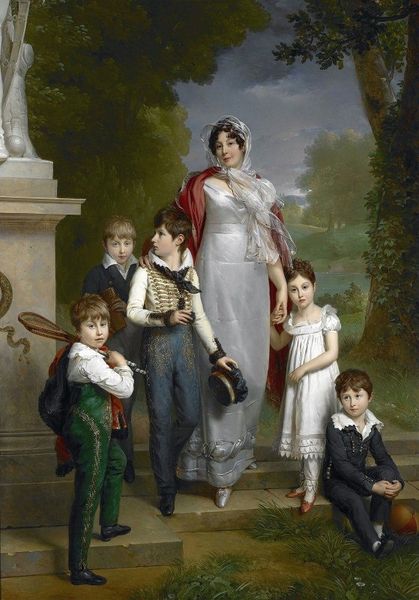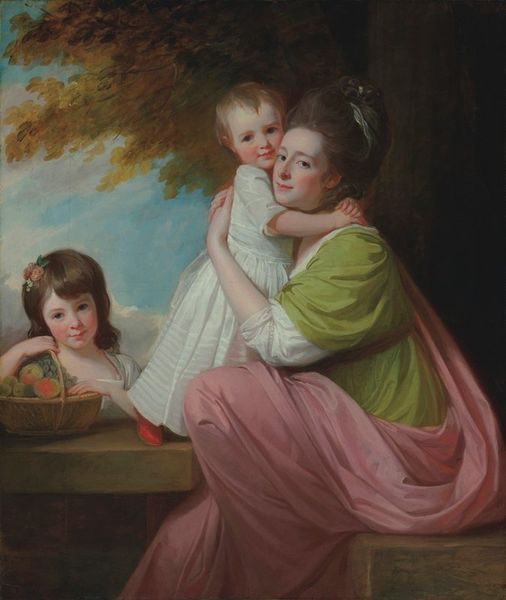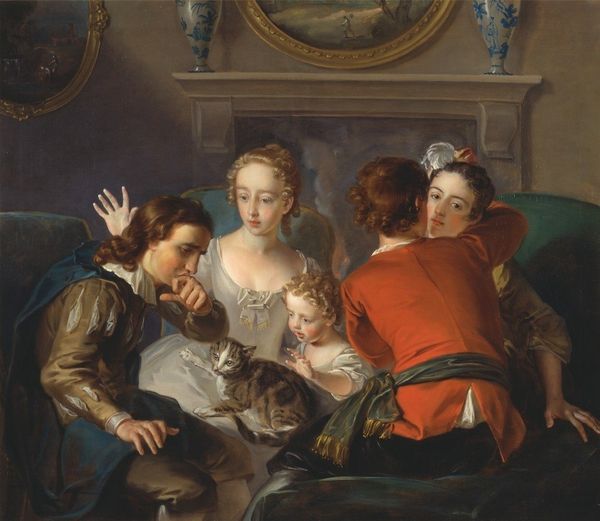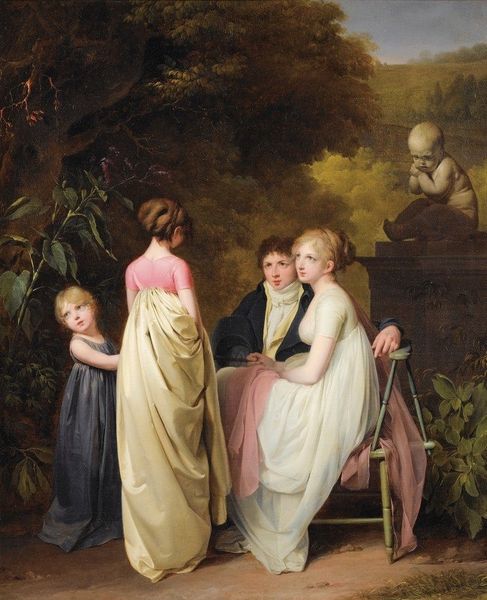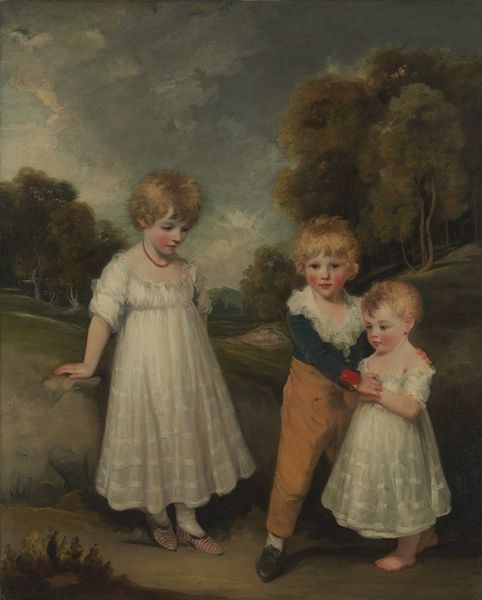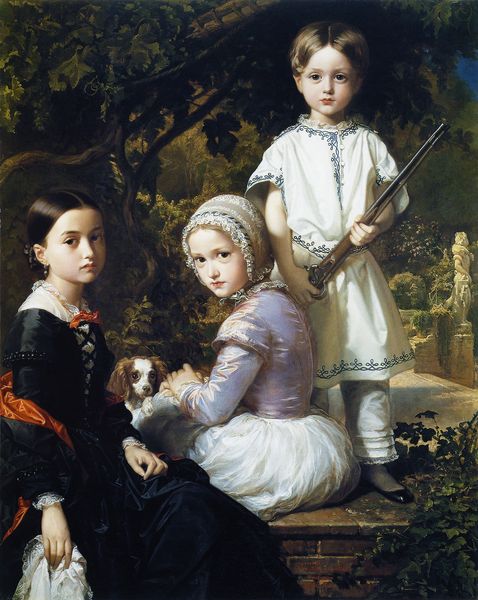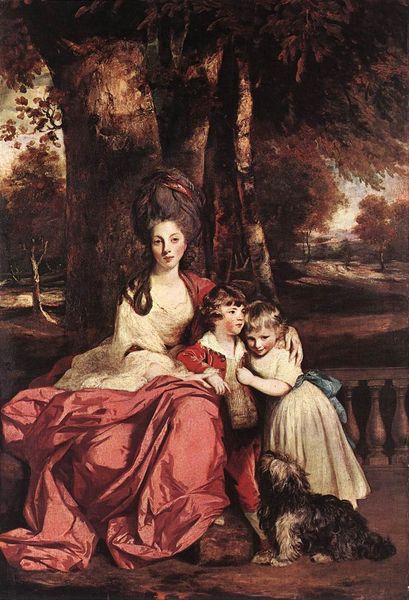
Portræt af Kammerherre, Plantageejer og Vice-Gouvernør i Vestindien Søbøtkers fire Børn, malede i Hummeltofte Have 1806
0:00
0:00
painting, oil-paint
#
portrait
#
painting
#
oil-paint
#
romanticism
#
genre-painting
#
academic-art
Copyright: Public Domain: Artvee
Curator: Here we have Christoffer Wilhelm Eckersberg's group portrait, created in 1806, of the four children of Chamberlain Söbötker, who owned plantations and served as Vice-Governor in the West Indies. It's titled "Portræt af Kammerherre, Plantageejer og Vice-Gouvernør i Vestindien Söbötker's fire Børn, malede i Hummeltofte Have"—quite a mouthful. Editor: My first impression is a stillness that belies the activity depicted. The light is distributed so evenly across the figures and the garden that everything feels almost frozen. Curator: That stillness might reflect the social expectations of portraiture at the time. It's interesting to see the children, meant to represent the family’s lineage and prosperity, staged against the backdrop of the Hummeltofte garden. It’s a tableau that subtly communicates power and status through the accoutrements of leisure. But there’s also an awkwardness in the staging. Editor: I agree. Despite the classical, almost sculptural quality of their forms, the composition feels slightly disjointed. Note the interplay between light and shadow and the geometry between the characters— particularly that boy in pursuit of the butterfly! Curator: Chasing a butterfly seems a somewhat obvious symbol for fleeting innocence, wouldn't you say? Yet that pursuit and those capturing it represents larger power dynamics in play at that historical moment. Editor: Certainly! The overall subdued color palette lends a sense of gravity, further emphasizing that sense of formality but notice that spot of orange in the basket—does this contribute to a reading of a deeper, subtle meaning? Curator: Perhaps, and I like your formalism but it’s important to recognize the subjects within the canvas, a family grown rich from plantations and holding high office through enslaved peoples. These objects carry their story along with its many other details and this can never be removed from our reading. Editor: Indeed. When we study color or composition and the butterfly of fleeting youth it seems so pleasant until this larger shadow engulfs us! Curator: Exactly. The painting and history of this place leaves us little to catch, but we now may have greater knowledge when pursuing that fleeing moment in the sun.
Comments
No comments
Be the first to comment and join the conversation on the ultimate creative platform.
